7 day roadtrip around Bulgaria
Why go to Bulgaria?
Bulgaria is becoming popular as a holiday destination for UK holidaymakers for both beach and skiing holidays but there is loads more to see there from Roman ruins, to Thracian tombs and dramatic landscapes. It is also incredibly good value as both food and accommodation are extremely cheap.
I visited for a week in April 2019 roadtripping from the East coast across the centre of the country to Sofia. The scenery was stunning and a week in the car driving around 1,500km only scratched the surface. It’s increasingly rare to find places that are ‘unspoilt’ from tourism (and I’m aware of the irony of saying that but the ethics of travel globalisation are beyond the remit of this blog!) and even in some of the most seemingly far flung places it feels impossible to escape the grasp of the 21st century (I’m looking at you, Rolex boutique in Yangon); Bulgaria really does retain that feel of unspoilt charm.

The beautiful Rhodope Mountains
How to get to Bulgaria
From the UK there are direct flights to various cities in Bulgaria although the flights are not always that frequent. You can fly to Varna, Burgas, Plovdiv and Sofia. We flew from London Luton to Burgas on the East coast and out of Sofia back to London Heathrow. Currently there are two Wizz Air flights a week (Tuesdays and Saturdays) from Luton to Burgas. Ryanair flies three times a week from Stansted to Plovdiv (Mondays, Wednesdays and Fridays); Wizz Air operates Luton to Varna daily (sometimes twice daily) and Sofia is served by a number of airlines; EasyJet (Gatwick), British Airways (Heathrow), Wizz Air (Luton) and Ryanair (Stansted). Prices are typically between £40 and £100 each way, although the season will impact this.
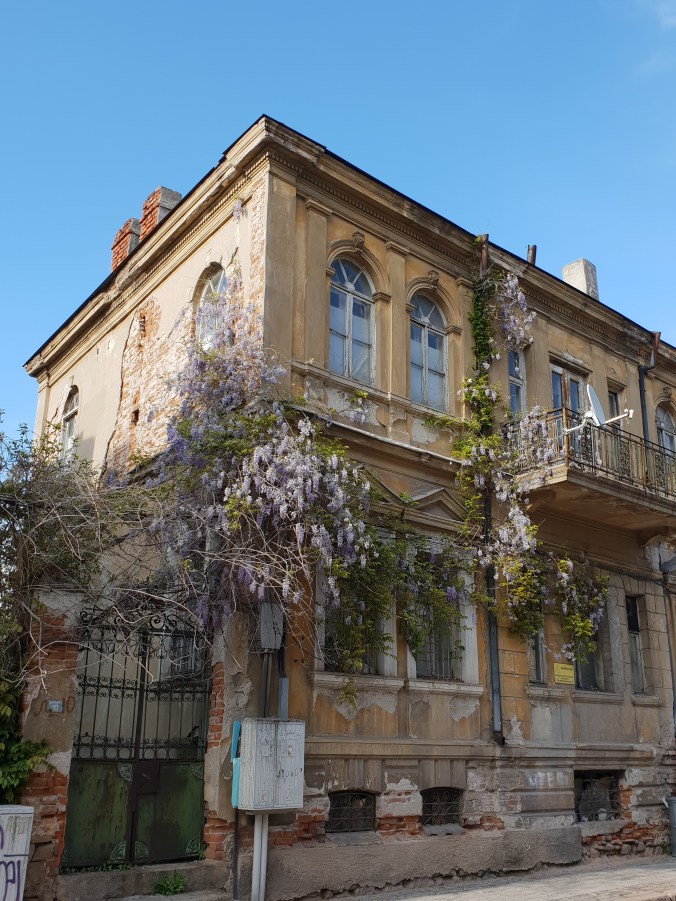
Charming Plovdiv
Bulgaria 7 day itinerary at a glance
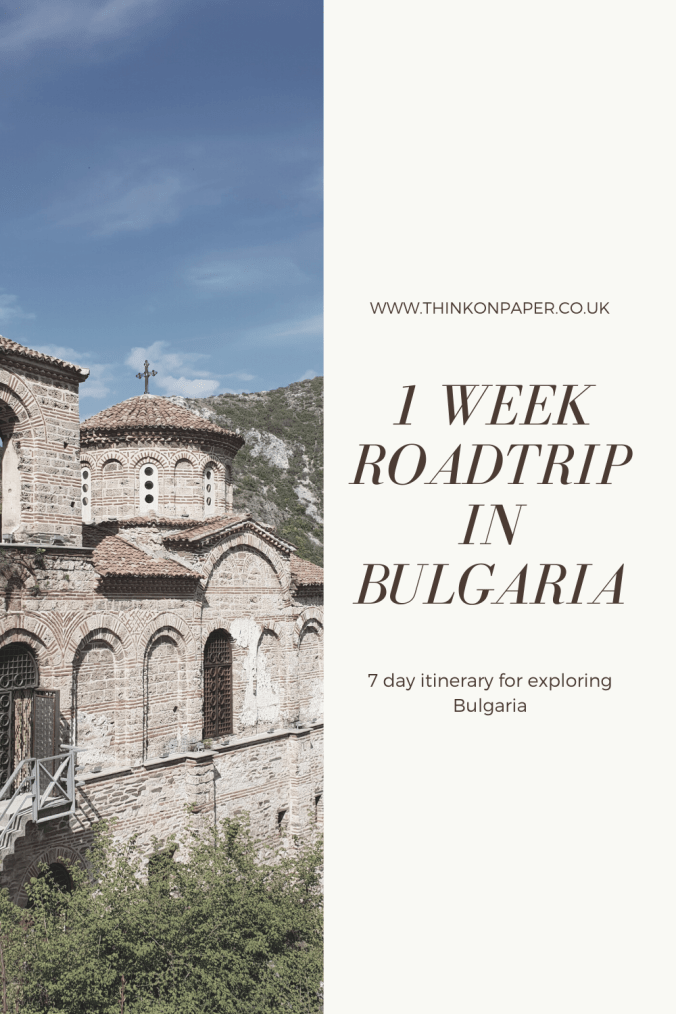 Day 1 – Nessebar to Veliko Tarnovo
Day 1 – Nessebar to Veliko Tarnovo
- Nessebar’s churches
- Lake Astanasovsko
- Drive to Veliko Tarnovo
Day 2 – Veliko Tarnovo to Plovdiv
- Veliko Tarnovo Town
- Tsarevets Fortress
- Arbanasi
- Dryanovo Monastery
- Shipka Pass
- Kazanluk
- Asen’s Fortress
- Bachkovo Monastery
- Drive to Plovdiv
Day 3 – Plovdiv to Koprivshtitsa
- Nebet Tepe
- Ethnographic Museum
- St Constantine and St Helena Church
- Plovdiv’s House Museums (Balabanov’s House, House Museum Hindilyan, House Museum Atanas Krastev)
- Ancient Theatre of Philippopolis
- Dzhumaya Mosque
- Sveta Marina Church
- Roman Odeon
- Roman Forum
- Roman Stadium
- Sightseeing Koprivshtitsa
Day 4 – Koprivshtitsa to Belogradchik
- Prohodna Cave
- Drive to Belogradchik
Day 5 – Belogradchik to Rila
- Belogradchik
- Boyana Church
- Stob Pyramids
Day 6 – Rila to Melnik
- Rila Monastery
- St Luke’s Hemritage
- St Ivan’s Cave
- Kiril Meadows
- Rozhen Monastery
- Melnik
- Koropulova House
- Wine tasting
Day 7 – Melnik to Sofia
- Drive to Sofia airport
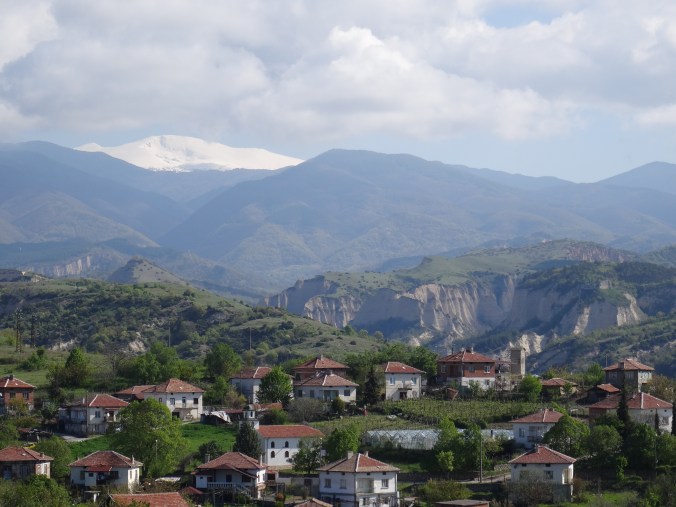
On the road between Rila and Melnik
Detailed Bulgarian itinerary
What I should say is that this is not a ‘complete’ itinerary of Bulgaria, not least because you’d need a few more weeks to see everything Arrive Burgas, collect your rental car from the airport and drive to Nessebar for the night. If you fancy a wilder experience then the infamous Sunny Beach is just up the road from
Day 1 – Nesebar to Veliko Tarnovo (250km – 3.5 hours driving)
Walking tour of Nesebar’s churches
Nesebar old town is a designated UNESCO World Heritage Site and sits on a rocky isthmus in the Black Sea. The main draw is the insane number of medieval churches. It gets busy in summer but is deserted in winter – we thought that there would be more going on in mid April but there wasn’t! Sadly most of the churches were closed when we visited, although it was still picturesque to walk around (even in the torrential rain that welcomed our visit!).

Nesebar’s narrow streets
You can buy a ticket from the Archaeological Museum that gives you access to the museum and various churches. You can check the elaborate opening times for the museum and various churches on the museum’s website. I unfortunately hadn’t found this before I visited so I think we visited just before things began to open for the season. The museum itself features Roman and Thracian artefacts including tombstones and pottery as well as jewellery and icons from Nesebar’s churches.
Sveta Sofia Church
Dating from the 5th century but rebuilt in the 9th as part of a large complex which included the Bishop’s palace. Although now just ruins it’s still impressive.
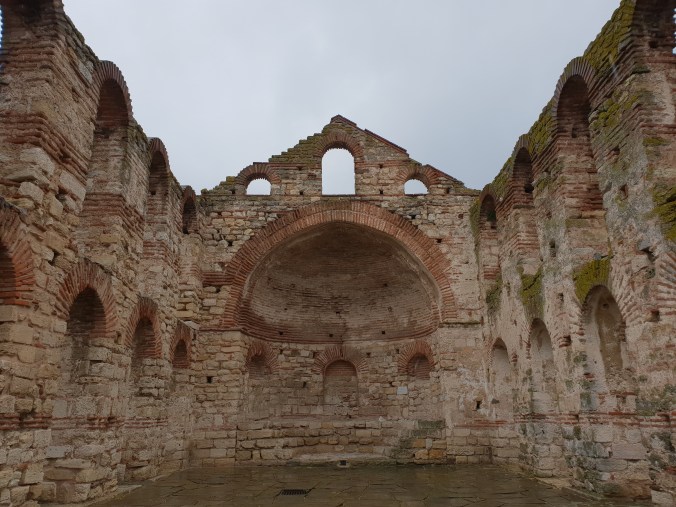
Sveta Sofia, Nesebar
Christ Pantokrator Church
Built in the 14th century this is one of the better preserved churches (now used as an art gallery) and features the characteristic Nesebar style of construction with alternative strips of red brick and white stone. The exterior is rather ornate and to the eastern end you can see a freeze of swastikas, an ancient solar symbol.

Christ Pantokrator, Nesebar
Sveti Stefan Church
This is one of the best preserved churches in Nesebar having been reconstructed some time around the 16th century but with parts of the structure dating from the 11th. The interior is covered with murals from the 16th to 18th centuries. Sadly it wasn’t open when I went.

Sveti Stefan, Nesebar
Basilica of the Merciful Virgin
Set on the coast and dating from the 6th century it later became a monastery. It was only rediscovered by archaeologists in the 1920s and is now little more than some ruined fortifications.
Svete Paraskeva
A tiny but perfectly formed 13th century church now used as an art gallery.
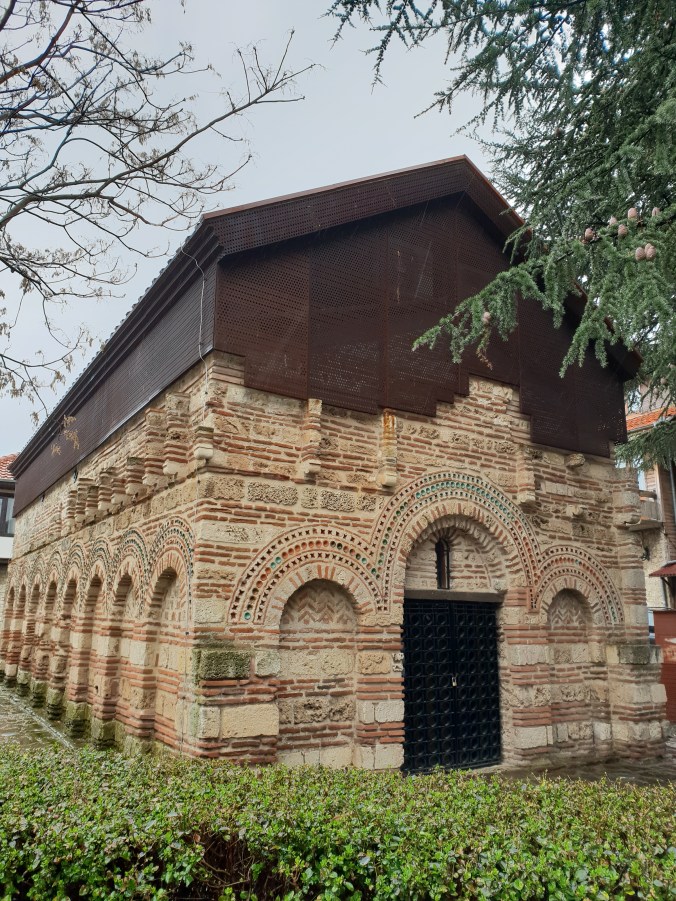
Sveta Paraskeva, Nesebar
Sveti Spas Church
A later church from the 17th century built below ground as required by Ottoman rule at the time. It looks more like an old barn than a church but there remain some murals depicting the life of Christ and the Virgin.
Lake Atanasovsko
Set out for Veliko Tarnovo stopping on the way at Lake Atanasovsko which has a pink hue due to the brine shrimp that make it their home. The area was not super attractive when we visited in the rain but it nicer whether it’s possible to bathe there in the pink water and there are showers and changing facilities as well as a massage tent in the height of summer. You can find more about what the lake has to offer here.
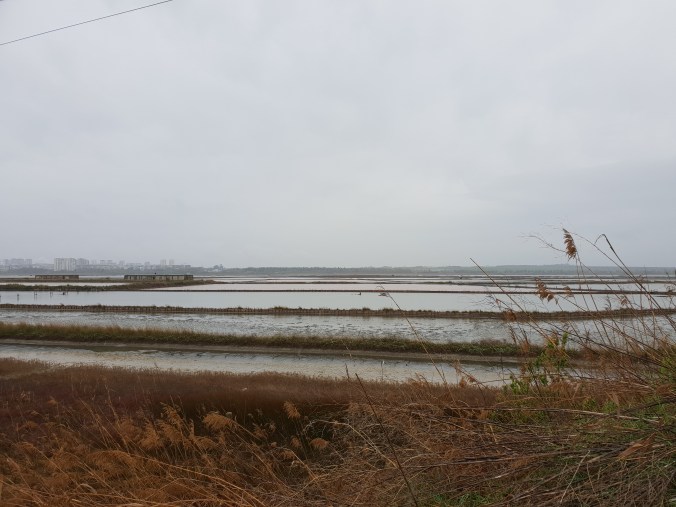
Lake Atanasovsko, Bulgaria
Day 2 – Veliko Tarnovo to Plovdiv (200km – 3 hours driving)
Veliko Tarnovo was the Bulgarian capital during the medieval period and there’s been a fortress on Tsarevets Hill since the Roman’s set up camp there and the Emperor Justinian created a citadel there in the 6th century. Veliko Tarnovo became an important city as the head of the Second Bulgarian Empire.
It’s a fascinating town to walk around with charming old streets, cosy restaurants and bars and the imposing Tsarevets Fortress commanding views across the surrounding hills. There are a number of interesting churches to visit like the 13th century Forty Martyrs Church and the Church of Sveta Bogoroditsa. There’s also an archaeological museum (9am – 6pm, closed Mondays) containing Roman artefacts, gold from Neolithic settlements and some Bulgarian medieval items.
Tsarevets Fortress
8am – 7pm Apr – Sept and 9am – 5pm Oct to Mar.
The fortress is reconstructed but the site is fascinating as an example of a medieval Bulgarian citadel as it includes the remains of a number of houses, churches, monasteries, shops and everything else that makes up a fortified city.

The church at Tsarevets Fortress
The views across the countryside and looking back at the town are stunning so it is well worth a visit. There’s little English language information but tours can be arranged.
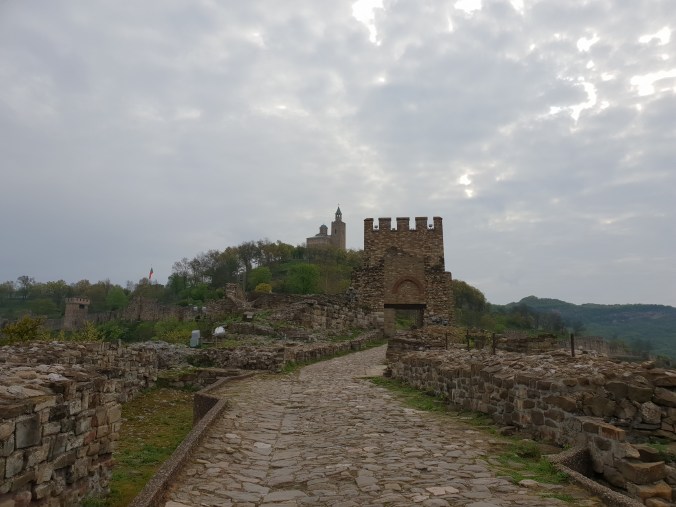
Tsarevets Fortress

The view of Tsarevets Fortress from our hotel
Arbanasi Village
On the way out of Veliko Tarnovo (or as a short trip if you’re staying a few days) the tiny village of Arbanasi is an essential stop for the highly decorated Nativity Church.
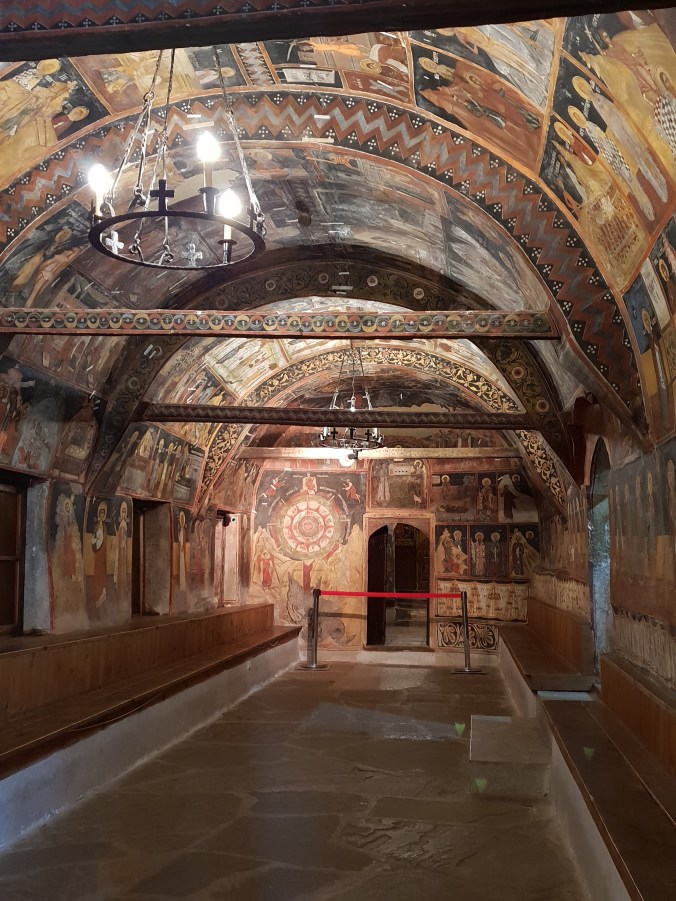
Inside the Nativity Church in Arbanasi Village
There’s a seconded frescoed church, the Church of Sveti Arhangeli Mikhail & Gavril as well as the historic Konstantsalieva House first built in the 17th century and then decorated in the revival style which includes a collection of period furniture. Three other 17th century working monasteries can be found in Arbanasi.
Dryanovo Monastery
9am – 6pm
A working orthodox monastery which dates from the 12th century and is free to visit. There is also accommodation available if you call ahead. It includes a historical museum (which is closed for lunch and after 3:30pm) and nearby you can visit the Bacho Kiro cave (9am – 6pm Apr – Oct and 10am – 4pm Nov – Mar) which was inhabited during the Palaeolithic era.
Shipka Pass
The road to Plovdiv will take you through this scenic pass which cuts through the Balkan Mountains at an elevation of nearly 1,200m. On a clear day is affords some good views over the countryside but beware the road is extremely windy which can get treacherous in thick fog which was what greeted our ascent. The pass was home to a famous battle during the Russo-Turkish war which is commemorated by a monument which (if you want to climb the 900 steps up to it!) affords a panorama around Shipka. There are a couple of restaurants up there; we ate at the more dilapidated looking one and it was pretty good.
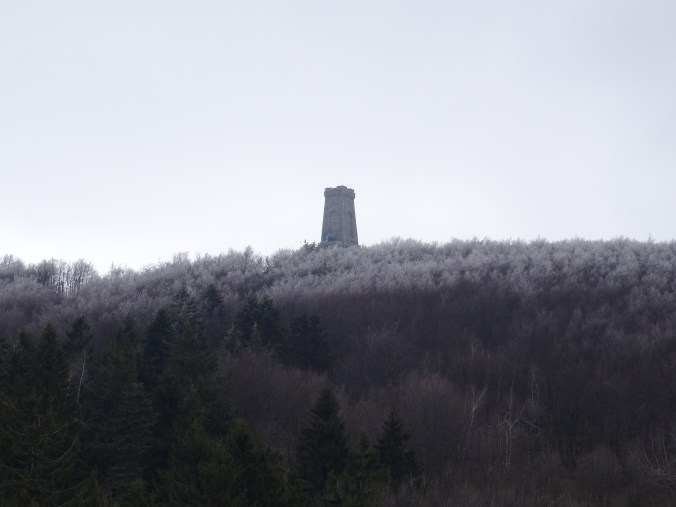
The monument on top of the Shipka Pass
Thracian Tomb of Kazanluk
A vaulted, highly frescoed Thracian tomb dating from the 4th century BCE can be found just outside the town of Kazanluk. We decided not to stop here as it’s not possible to visit the original tomb itself, although an identical replica was built alongside it.
Asen’s Fortress
An important 11th century fortress (renovated in the 13th century) with a huge amount of history although the most prominent remnant is a small church nestled precariously among the Rhodope Mountains.
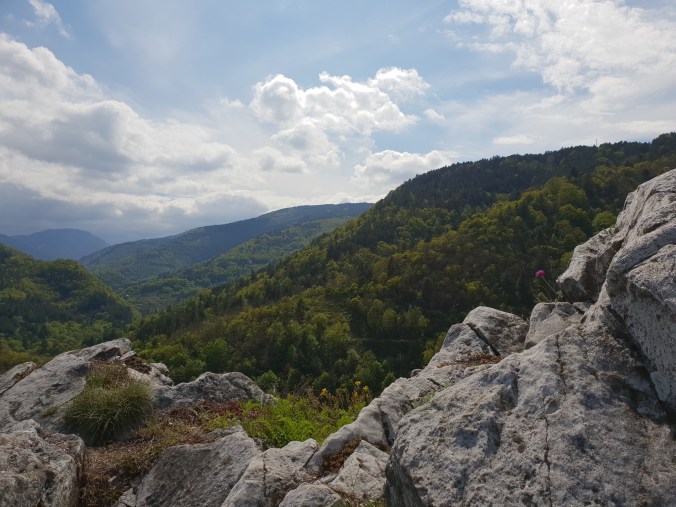
The Rhodope Mountains
The view of this tiny but perfect church among the rocks and shrubs is a solid contender for any Bulgaria travel guide front cover. Inside the church you can find 14th century murals.
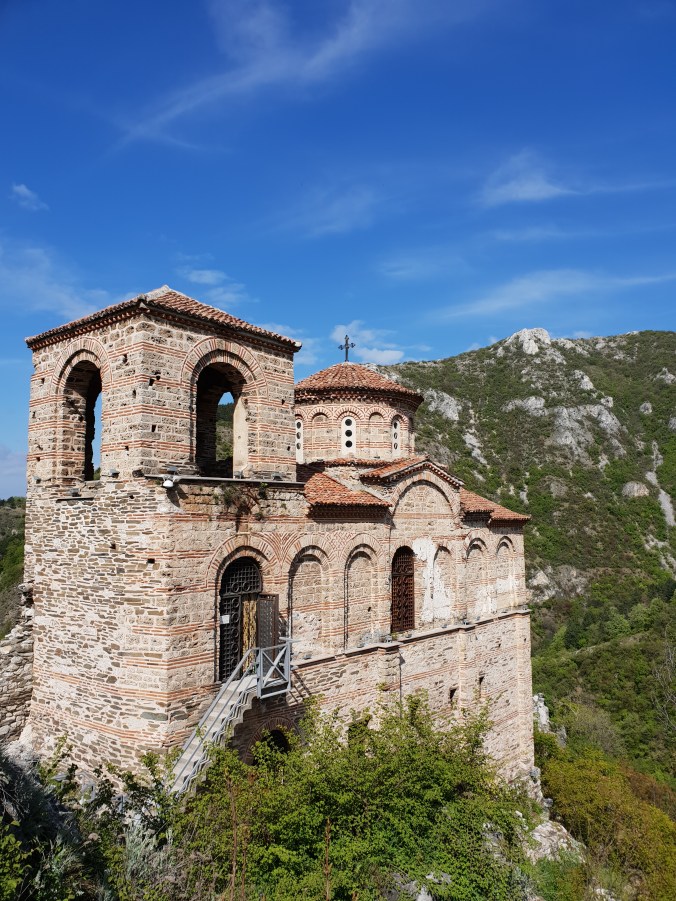
The church at Asen’s Fortress
The views from this area of the surrounding mountains are worth it even if you’re not interested in the church or fortress.

Inside the church at Asen’s Fortress
Bachkovo Monastery
7am – 7pm
A little further up the road from Asen’s fortress is 11th century Backkovo Monastery. Near the monastery’s entrance there’s also an 11th century ossuary decorated with medieval murals. The key attraction is the 19th century ‘panorama’ mural on the outside wall of the refectory which features a history of the monastery painted as a bird’s eye view of the site.
Day 3 – Plovdiv to Koprivshtitsa (90km – 1.5 hours driving)
I loved Plovdiv; it’s a lively, modern town scattered with ancient ruins, a charming old town and ringed with hills. It felt like a small, eastern Rome to me.
Nebet Tepe
Start at Nebet Tepe, one of Plovdiv’s many hills near the old town which contains the ruins of an old Thracian settlement. The ruins themselves are not all that interesting but the hill does afford good views across Plovdiv.
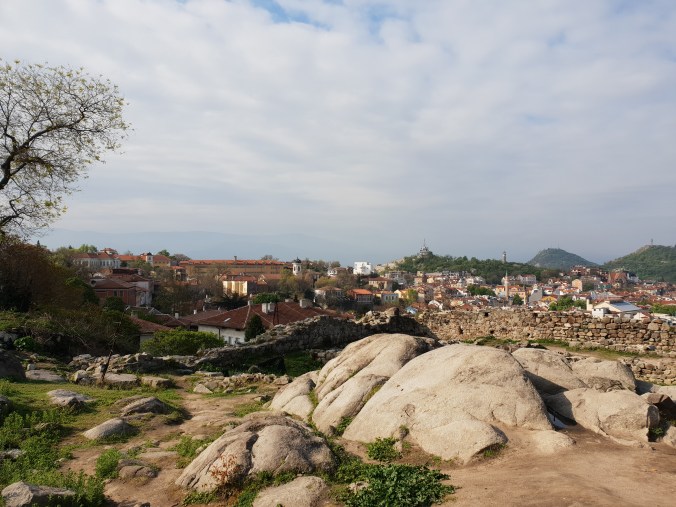
Nebet Tepe, looking over Plovdiv
Plovdiv Old Town and House Museums
Plovidv Old Town is a stunning collection of beautifully restored, highly colourful 19th century houses. Take a guide book with you while you wander the pretty streets and look out for the most interesting and beautiful houses. Many are museums or galleries, one of the most beautifully decorated in the National Revival period houses the Ethnographical Museum.
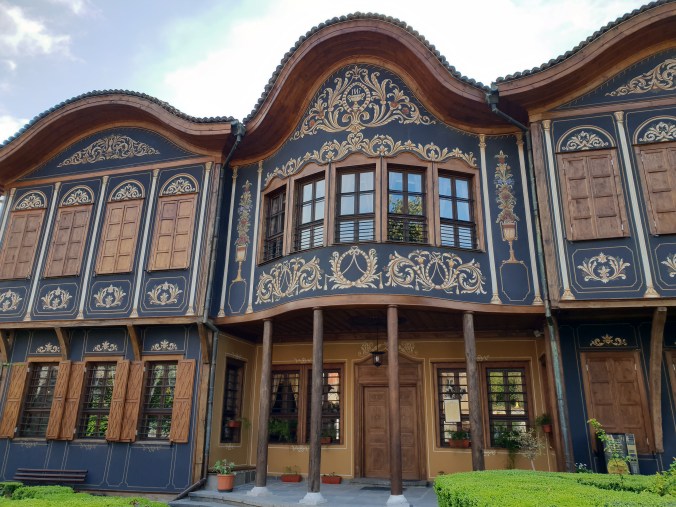
Plovdiv’s Ethnographical Museum
The Museum houses exhibits including folk costumes and musical instruments. There are many more museums in the Old Town and wider Plovdiv if you intend to spend more time there; we had to make the most of our 24 hours in the city!

Plovdiv’s picturesque Old Town
Ancient Theatre of Philippopolis
8am – 6pm
This stunning amphitheatre was likely built in the 2nd century CE under the rule of the Emperor Domitian to seat 6,000 spectators.

Ancient Theater of Philippopolis, Plovdiv
It was not found by archaeologists until the late 1960s after which it was restored. I spent quite some time wandering around and sitting in this theatre, it really is rather remarkable and with wonderful views over the town.

Ancient Theater of Philippopolis, Plovdiv
Dzhumaya Mosque
This mosque is one of the oldest in the Balkans dating from the middle of the 15th century; it was one of the largest of Plovdiv’s mosques in the Ottoman period.

Dzhumaya Mosque, Plovdiv
Roman Forum and Odeon
Ruins of the forum are still being excavated while the odeon has been partially restored.
Roman Stadium
Most of this is hidden under a mall but parts of it can still be seen in central Plovdiv.

Plovdiv’s Roman Stadium half hidden by a mall
Koprivshtitsa
This is a must visit destination in Bulgaria for the almost unsurpassed quaintness of the place. I think the fact we went off season meant we were more or less alone in the town; we certainly got some odd looks going into the local restaurants looking for food.

Traditional houses in Koprivshtitsa
There’s not much to do except wander around and look at the beautiful ‘house museums’ in the village. They’re all built in the Bulgarian National Revival Style and painted in various vivid colours. I spent a good few hours wandering around.

Wandering around Koprivshtitsa
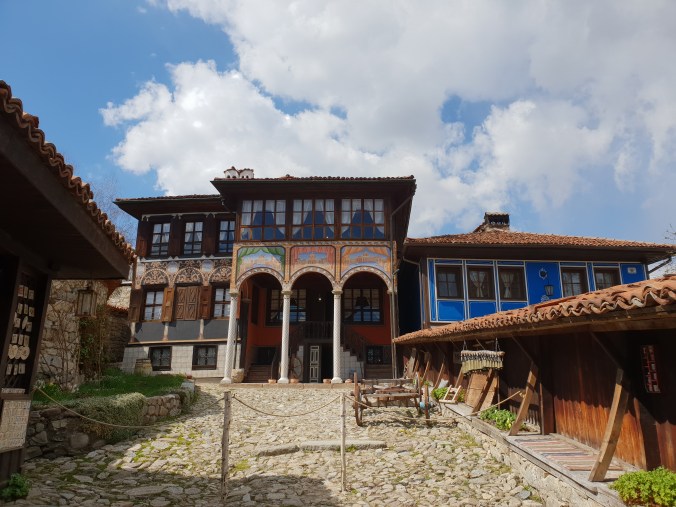
Oslekov’s House, Koprivshtitsa
We stayed overnight but it might work better as a stopping off point for a few hours along with a nice lunch as accommodation was hard to come by and it there wasn’t much else to do once you’d walked around the whole village. We had some great meals in a lovely traditional restaurant called Family Restaurant Chuchura – the pork Kavarma and garlic bread was especially delicious.
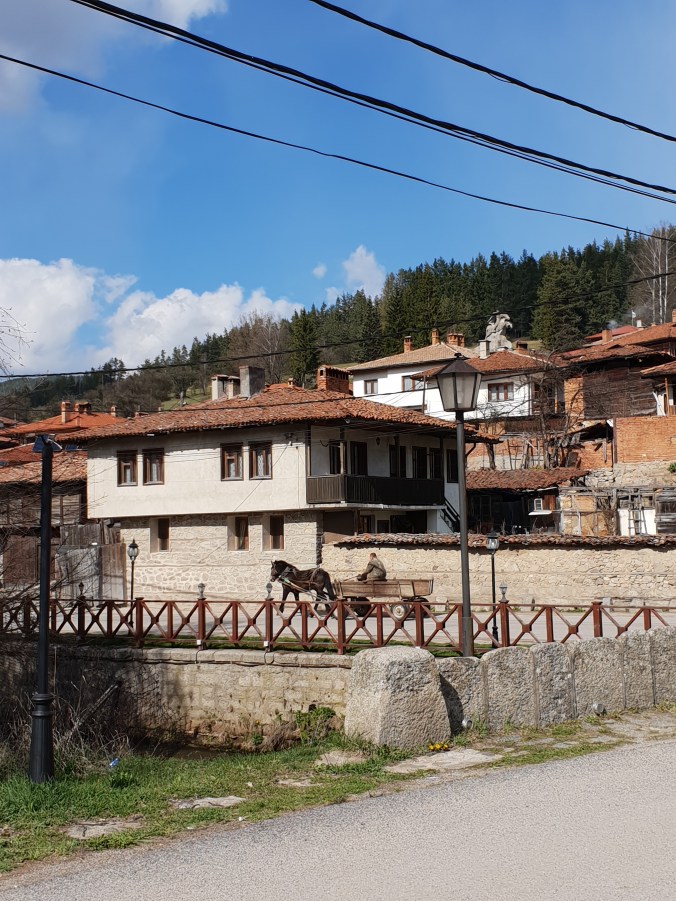
A horse and cart in Koprivshtitsa
Day 4 – Koprivshtitsa to Belogradchik (280km – 5 hours driving)
Prohodna Cave
This karst cave is popular for the ‘eyes of God’ formation in the ceiling. According to Google it’s also a popular site for bungee jumping! There’s a parking lot near to the entrance from where it’s a short walk down into the cave.
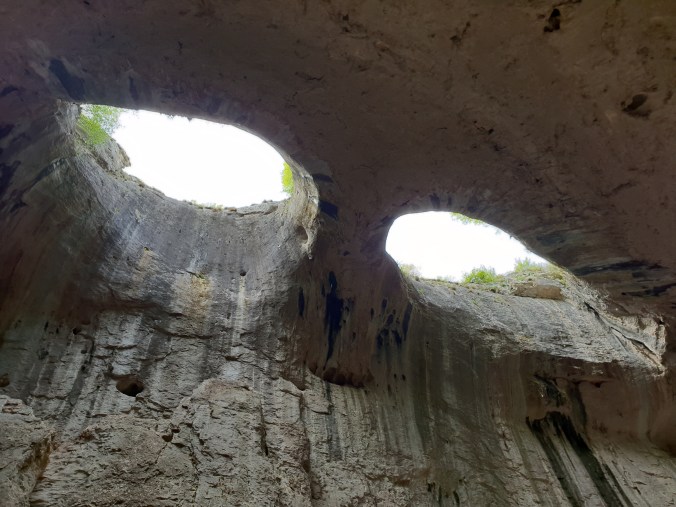
The ‘eyes’ of Prohodna Cave
Belogradchik
The small town of Belogradchik is in the far northwest of the country near the Serbian border. There isn’t a whole lot to see in the town but it’s a popular toursist destination due to the nearby Belogradchik Fortress and rocks and Magura Cave.
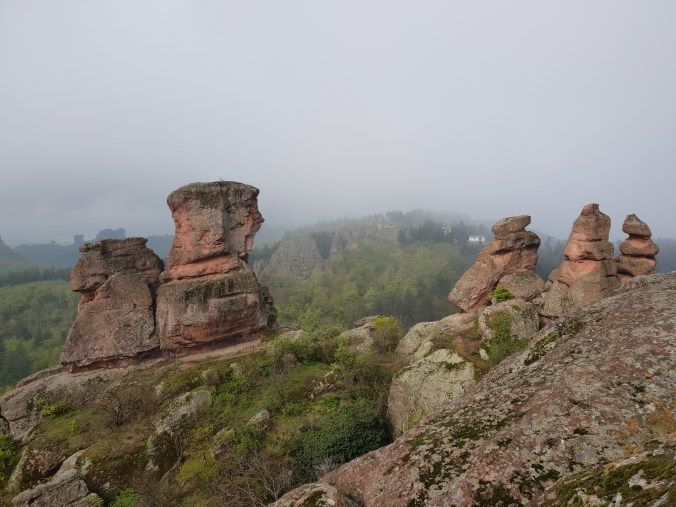
Rock formations at the top of Belogradchik Fortress
Belogradchik ‘Kaleto’ Fortress
9am – 6pm (June to September) and 9am – 5pm (October to May)
The fortress was originally built in Roman times with the huge rocks used as natural protection. It was later extended in the 14th century but captured in 1396 by the Ottomans who continued to expand and reorganise the fortress.
There’s a small museum on site (which I didn’t visit) but the main draw is the climb up into the rocks above the fortress for amazing views across the surrounding hills and of the nearby rock formations themselves.
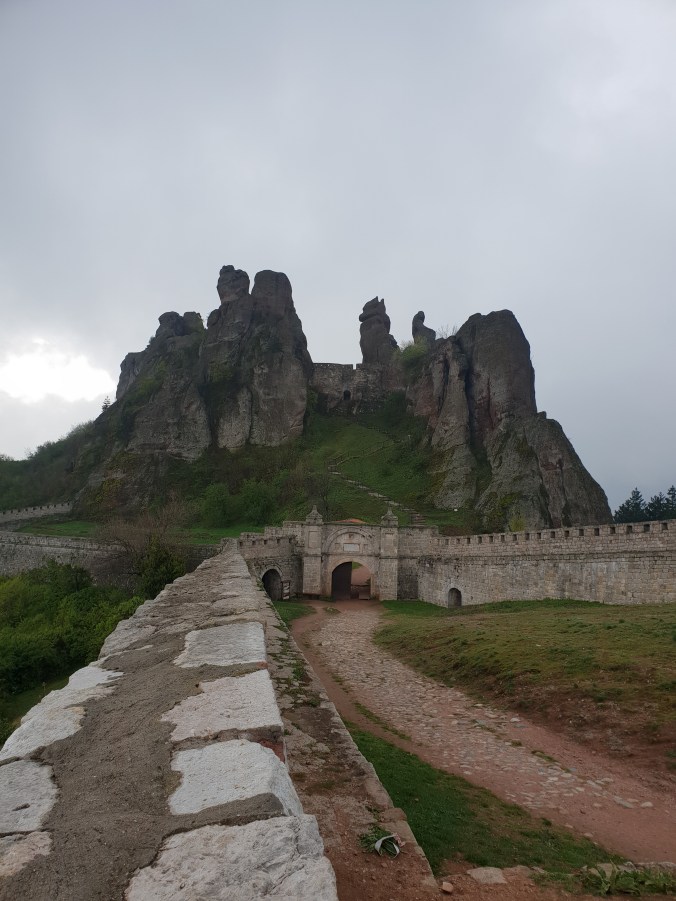
Magura Cave
25km from Belogradchik is Magura Cave which contains prehistoric wall paintings. Bones of many prehistoric species were also found here.
Day 5 – Belogradchik to Rila (280km – 4.5 hours driving)
Boyana Church
9am – 5pm (November to March) and 9:30am – 5:30pm (April – October)
Boyana is a quiet suburb of Sofia and home to 13th century Boyana Church which is on the UNESCO World Heritage List. It contains 90 rare murals from the same period which are some of the finest examples of medieval Bulgarian art. You can only go inside with a small group and they make you wait outside until the next group is ready to avoid overcrowding the church. The murals really are breathtaking and I’m so glad I went to see this even though it was a bit out of my way.

The outside of Boyana church (photography is prohibited inside)
Stob Pyramids
The Stob Earth Pyramids are rock formations in the foothills of the Rila Mountains, similar in formation to the rocks around nearby Melnik. We had hoped to drive up and see the pyramids but the best formations can only been seen from the eco trail. After a long day driving we decided not to do the trail, but it is only an hour’s walking to hike the full trail so it’s easily achievable on this itinerary.
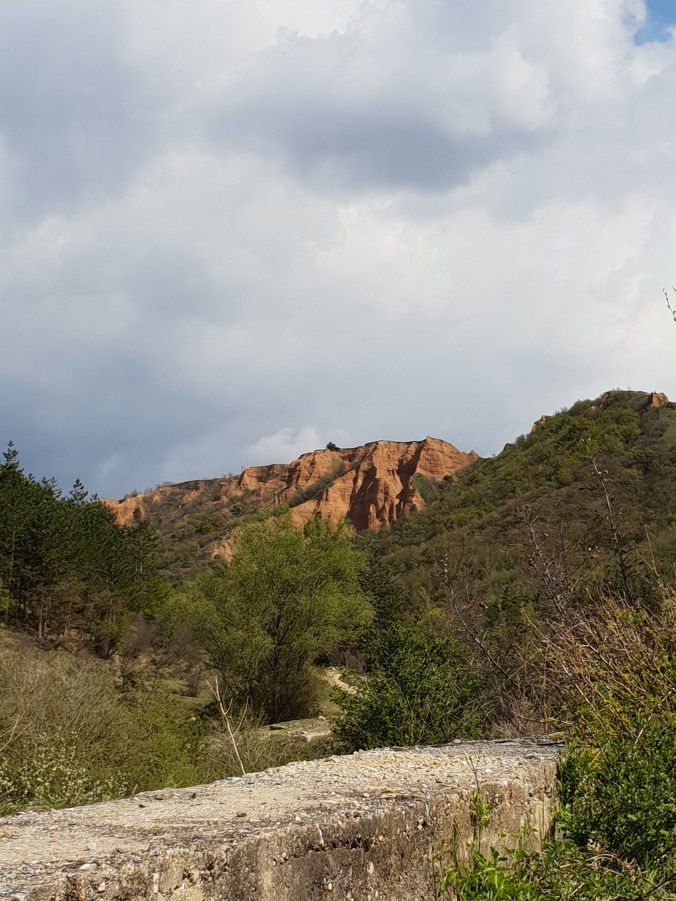
The limited formations of the Stob Pyramids that can be seen from the car park!
Drive to Rila
Depending on what time you arrive, you can either see Rila today or do it first thing in the morning; give yourself maximum flexibility by staying nearby. It’s likely you’ll arrive early enough to see the monastery but not the museum.
Day 6 – Rila to Melnik (120km – 2 hours driving)
Rila Monastery
6am – 10pm daily; museum 8am – 5pm
Founded in 927 by a monk called Ivan Rilski but at its present location since 1335, Rila Monastery is Bulgaria’s largest, a huge tourist draw and a UNESCO World Heritage Site. The site includes a church, post office, museums, guest rooms and various other monastic buildings. It’s possible to stay at the monastery (although it’s primarily for people on pilgrimage) and according to the website itself this process can be tricky.
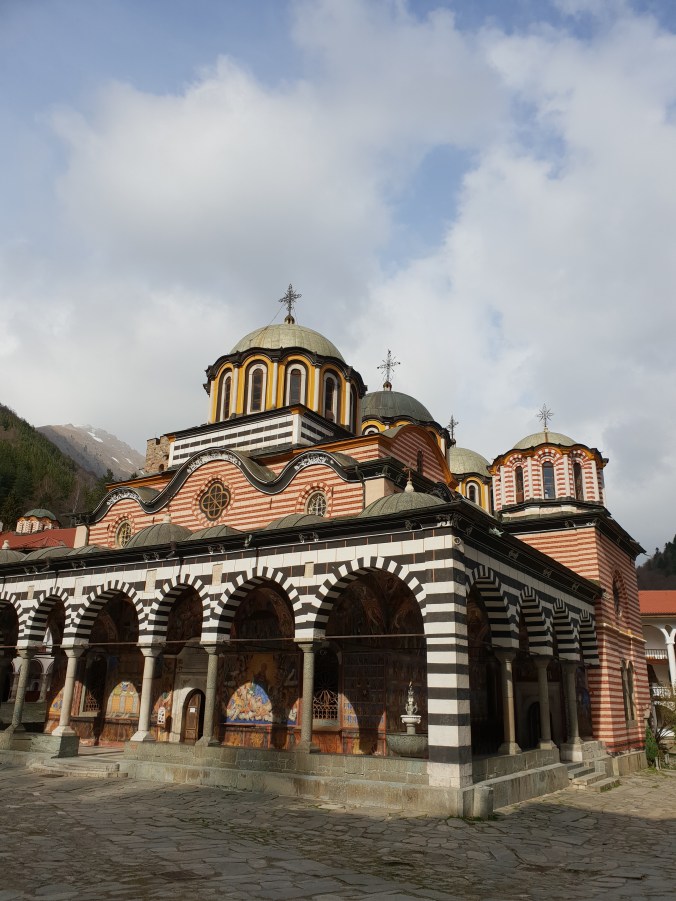
Nativity of the Virgin Mother church, Rila Monastery
The Church of Rozhdestvo Bogorodichno (Church of the Nativity), built in the min 19th century, sits in the middle of a courtyard ringed by buildings with colourful balconies. The exterior of the church is covered with frescoes and inside there’s an intricate iconostasis. The museum is worth visiting for the intricately carved Rila Cross, covered in 140 miniature biblical scenes.

Frescoes in the portico of Rila’s church with the striped monastery buildings in the background
The Hreliova Tower at the centre of the complex is the only 14th century structure remaining after a fire gutted most of the monastery in 1863.
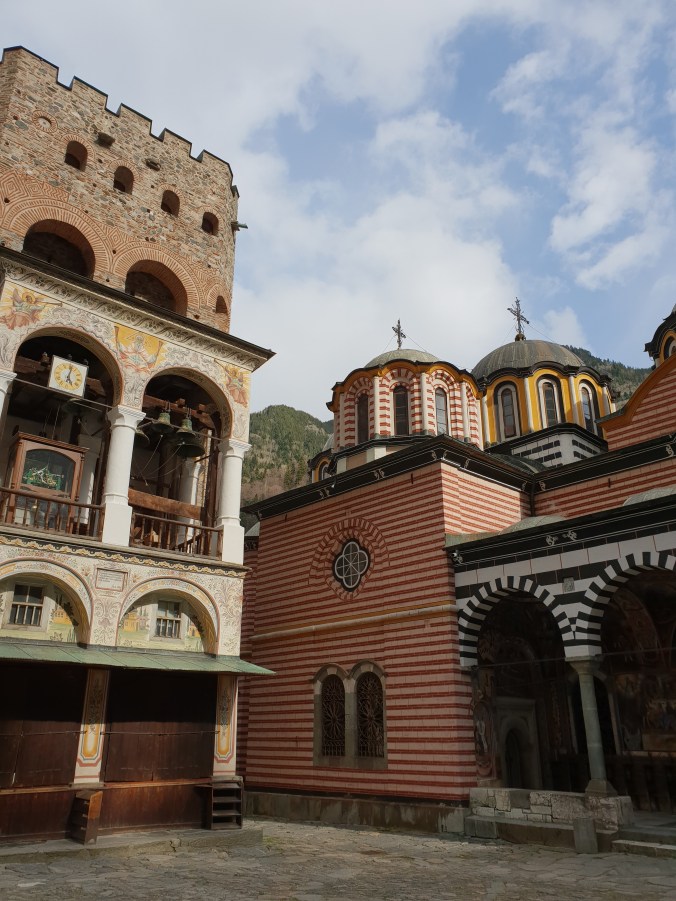
The Hreliova Tower, Rila Monastery
Kiril Meadows, St Luke’s Hemritage and St Ivan’s Cave
The monastery isn’t the only thing of interest in the area. Kiril meadow is just 7km away and makes a pleasant walk (although I didn’t have time to visit on my trip). Nearby is also St Luke’s Hermitage and St Ivan’s Cave. The hermitage, built in the 18th century contains the Church of Sveti Luka in a courtyard and a 15 minute walk up a trail from here you can find St Ivan’s Cave where the founder of Rila Monastery lived and is buried.
Rozhen Monastery
7am – 7pm
Just outside Melnik you’ll find the Birth of the Mary Virgin Monastery, first built in the 12th century and reconstructed in the 16th before being destroyed by the Turks.
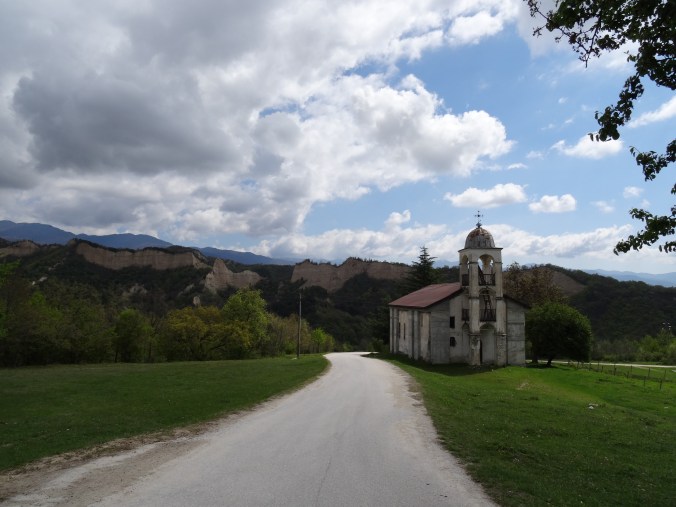
A ruined church on the road to Rozhen Monastery
The current buildings date from the mid to late 18th century. It’s a charming monastery with a vine-covered courtyard and chocolate-box buildings. The real draw is the murals inside the church (although the adorable cat roaming the courtyard was a close second). The murals are contemporaneous with the building and there are also impressive woodcarvings, iconostases and stained glass windows.

Wall paintings on the exterior of the church in Rozhen Monastery
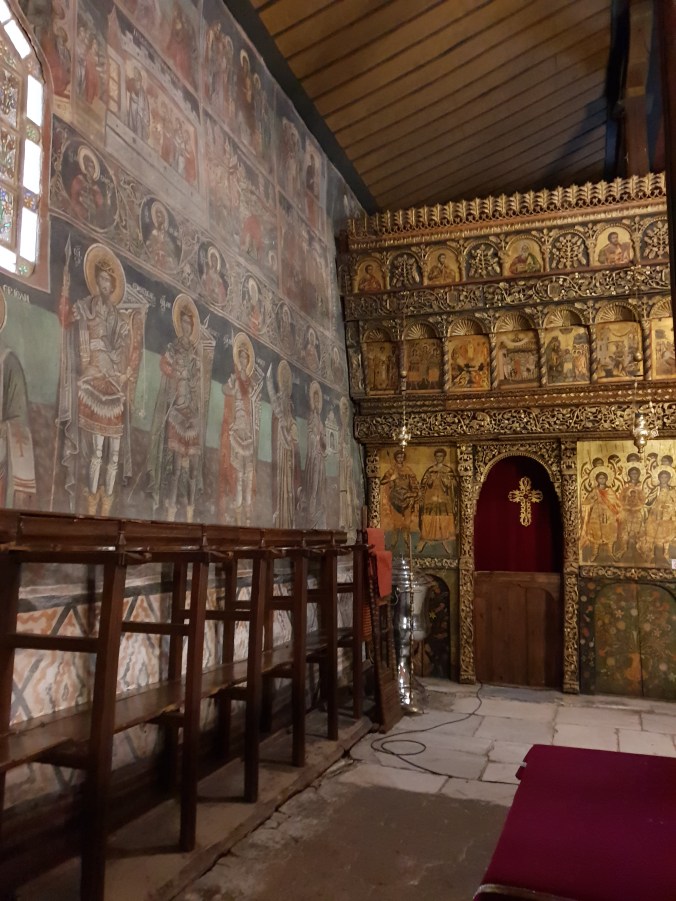
Wall paintings and iconostasis inside the church at Rozhen Monastery
Melnik
Melnik is a fascinating and beautiful village just 20km from the Greek border. It’s famous for its wines and there are several wineries in the village that you can visit. The whole village is ringed by unearthly looking sandstone cliffs weathered into mushroom-like shapes which provide a picturesque backdrop.
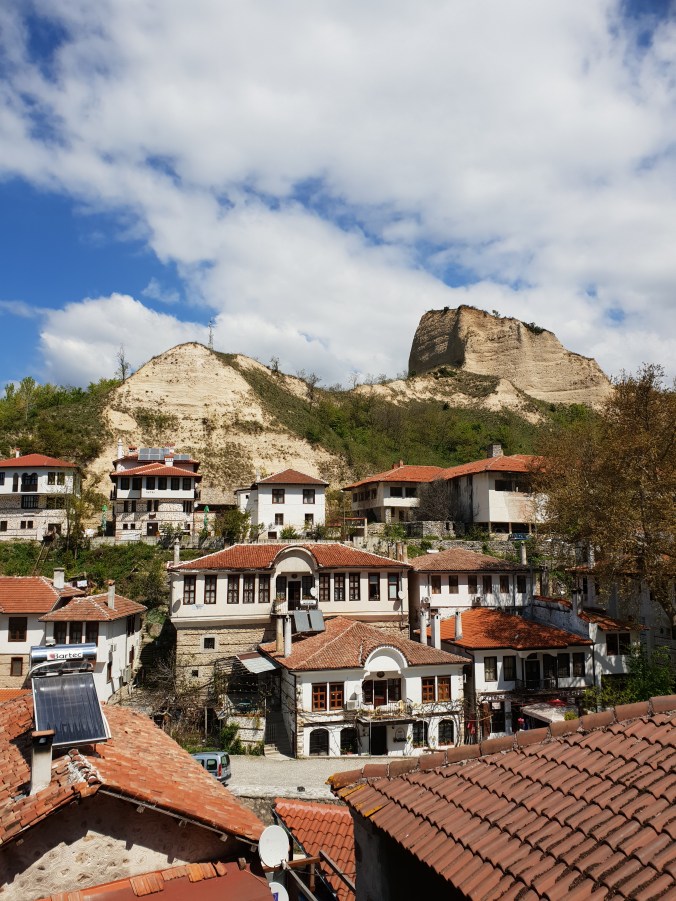
The beautiful town of Melnik with dramatic rock background
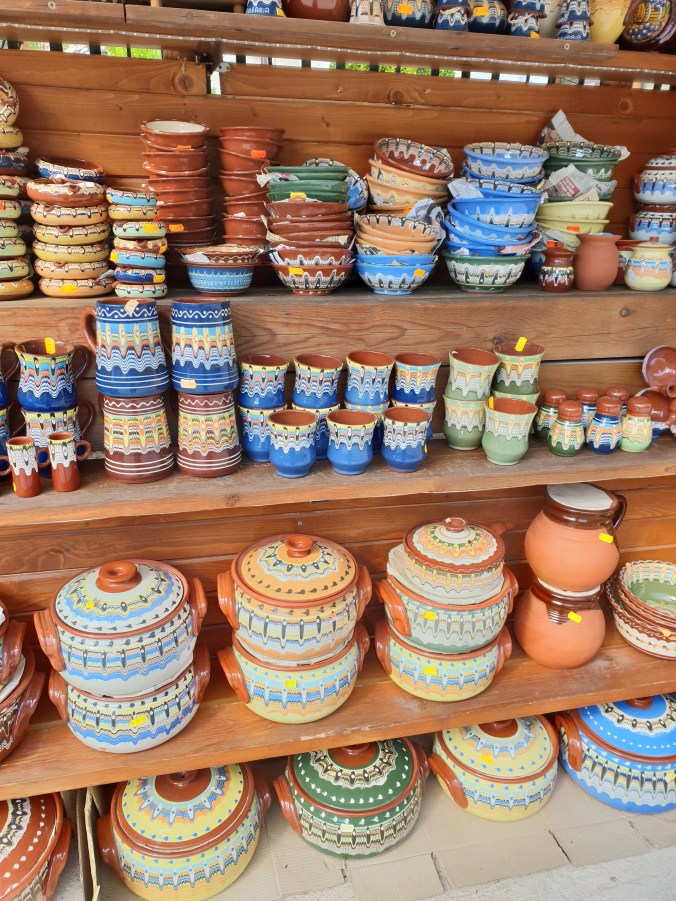
Traditional Bulgarian pottery for sale in Melnik
The village is only small so a day here is enough (and all of it can be seen on foot) but it’s a nice place to stay overnight owing to the many restaurants and it makes a good base for exploring the Pirin Mountains.
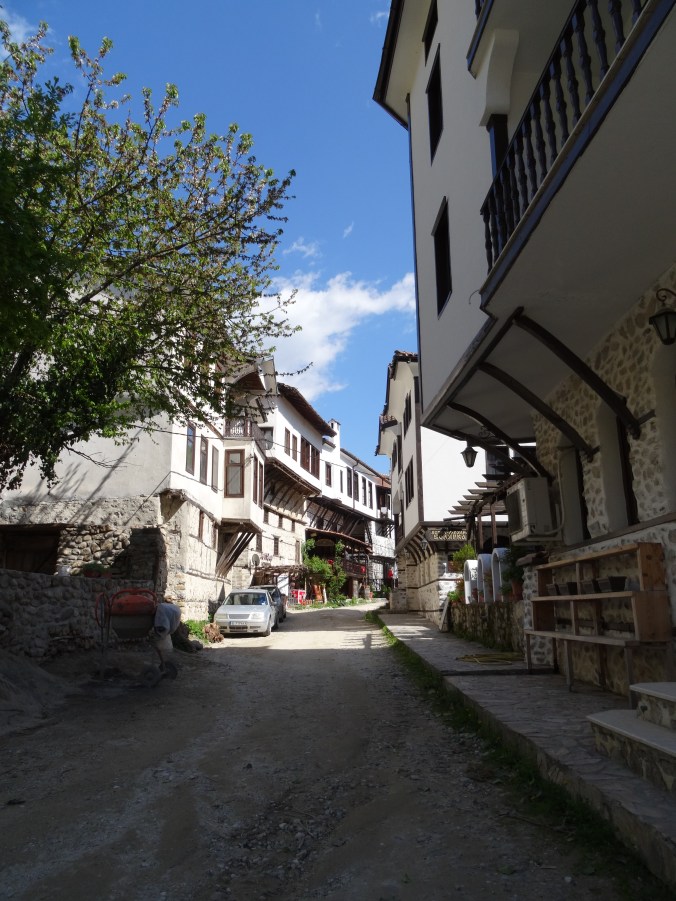
Picturesque streets in Melnik

Ruins in Melnik
The town is picturesque and you can buy local products such as wine and traditional Bulgarian pottery. There are ruined churches and dwellings across Melnik which you can stroll around on foot.
Kordopulov House
8am – 8pm
This 18th century house belonged to Melnik wine merchants. It’s been beautifully restored with painted walls, stained glass and 19th century furnishings. You can also visit the vast cellars under the house and buy the wine that’s made there.
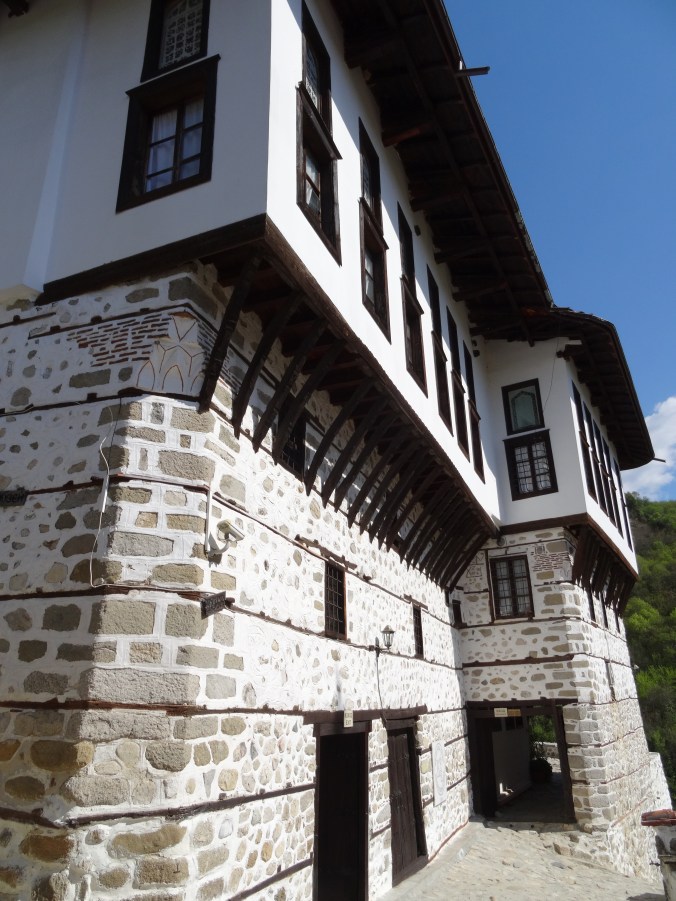
Kordopulov House, Melnik
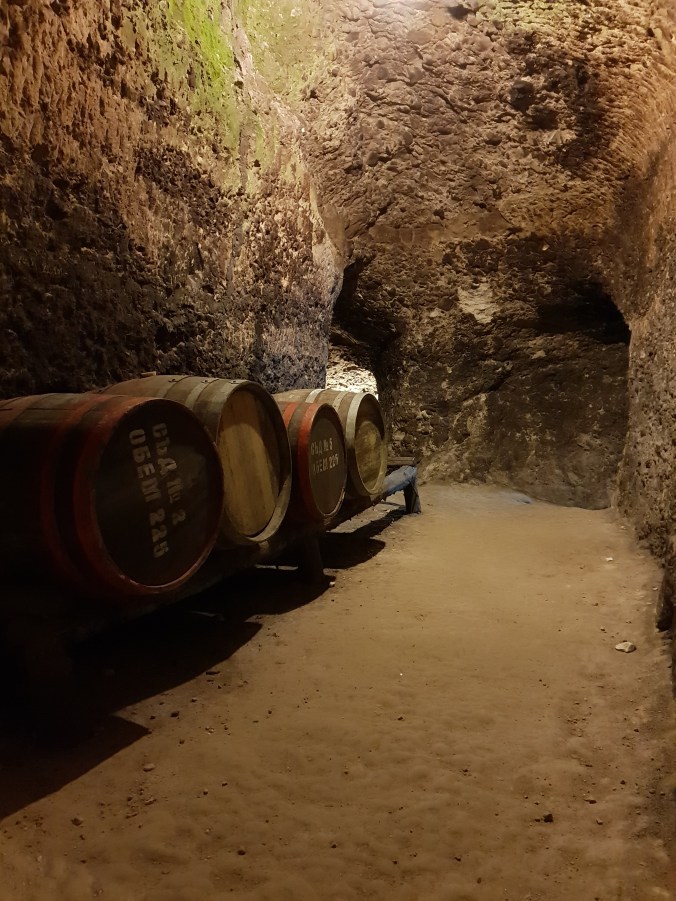
The wine cellars under Kordopulov House, Melnik
Wine tasting
There are several wineries in Melnik which you can visit. Lonely Planet recommends Mitko Manolev Winery, which is open 9am to midnight. We didn’t visit, although I think I did pass it on my travels around Melnik as it’s near Kordopulov House. It’s a cellar dug into the rocks with some chairs and tables outside.
Day 7 – Melnik to Sofia (200km – 2.5 hours driving)
Finish your week in Bulgaria with a leisurely drive back to Sofia for your flight home.
What to eat in Bulgaria
I loved eating in Bulgaria. The cuisine is an interesting mix of fresh, delicious salads and stodgier heartier foods like stews and pastries. The food really reflects the geography and you’ll eat dishes that you might otherwise have identified as being Greek or Turkish and other dishes that seem unmistakably Balkan. One oddity of eating in a Bulgarian restaurant was the prevalence of TVs showing cooking channels – nearly every restaurant (even nice ones!) had TVs mounted on various walls which makes eating a rather distracting pastime…it definitely wasn’t for me!
Salads and vegetables
You cannot visit without trying Shopksa Salad, which is more or less a staple at every meal and a default national dish It’s a simple dish of tomatoes, cucumbers, green peppers and onions which is covered in grated white cheese called sirene which is similar to feta. I couldn’t get enough of this.
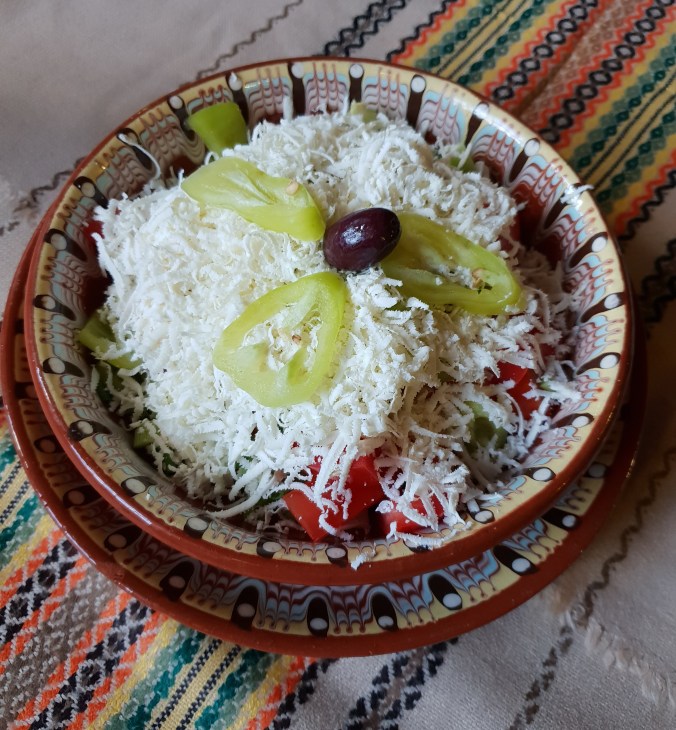
Shopksa salad in Bulgaria
Another staple salad is Snezhanka (snow white) salad which is a combination of cucumbers, plain yoghurt, garlic, dill and crushed walnuts, very similar to a Bulgarian soup called tarator.
Other common vegetables dishes are stuffed vine leaves (these were always amazing), stuffed roast peppers and baked aubergines in tomato with cheese.
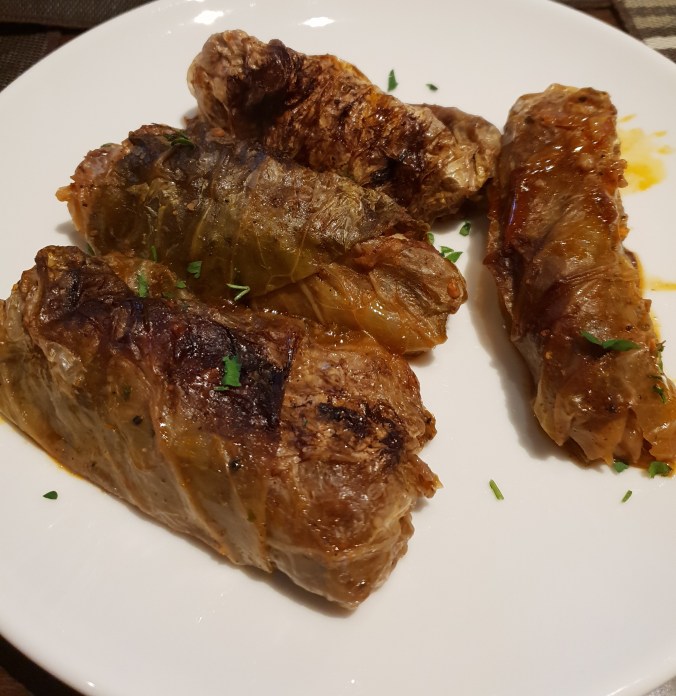
Stuffed vine leaves for dinner
Stews and meat
Kavarma is another staple dish, which is a claypot dish of stewed meat (usually chicken or pork) and vegetables). The dish sometimes contains cheese and an egg too as the style varies between regions. Greek-influenced musaka is also common.
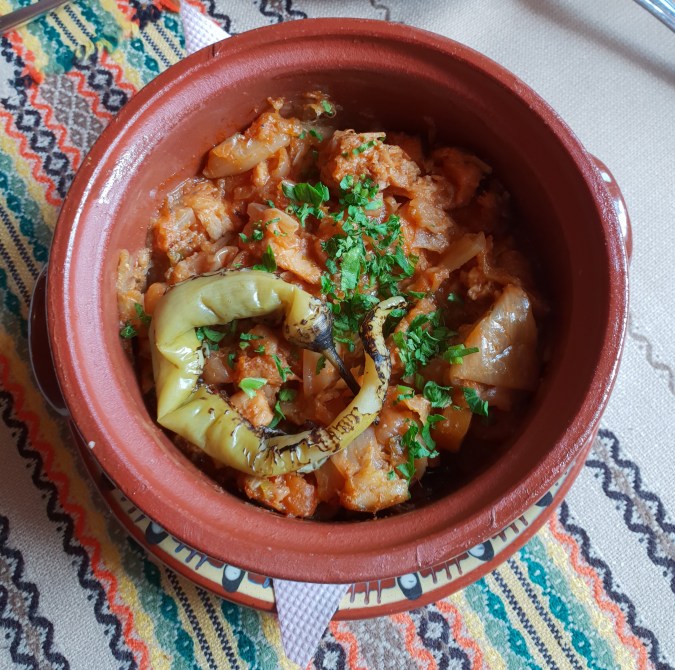
Pork and vegetable stew (kavarma) in beautiful traditional pottery at Chuchura Restaurant, Koprivshtitsa
Grilled meat (skara) is a huge feature of Bulgarian cuisine with skewered meats (shishcheta), especially pork, ‘spicy’ pork sausages (kebabche) and kyufte (round, flat pork burger) being popular choices. I had an amazing kyufte in Pri Ivan, Belogradchik. These are typically served with salad, fried potatoes or chips, or both. Any grilled meat is likely to also be accompanied by ljutenica, a sort of tomato and pepper relish which comes in varying spice levels (although if you’re used to eating international cuisine, you won’t find any variation spicy!)
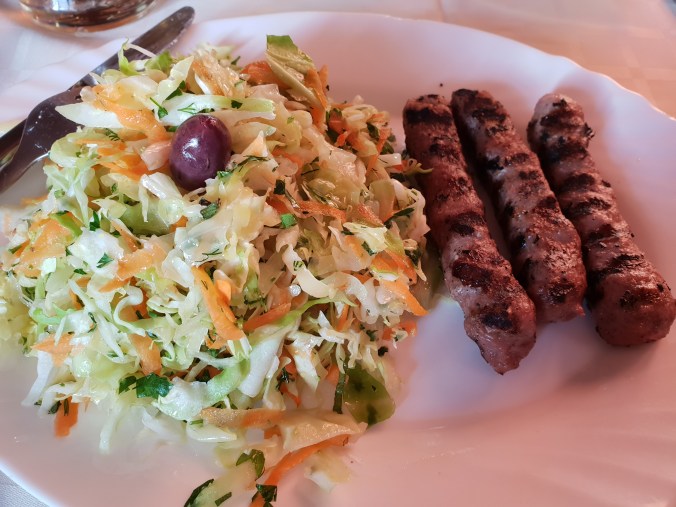
Kebabche and salad for dinner
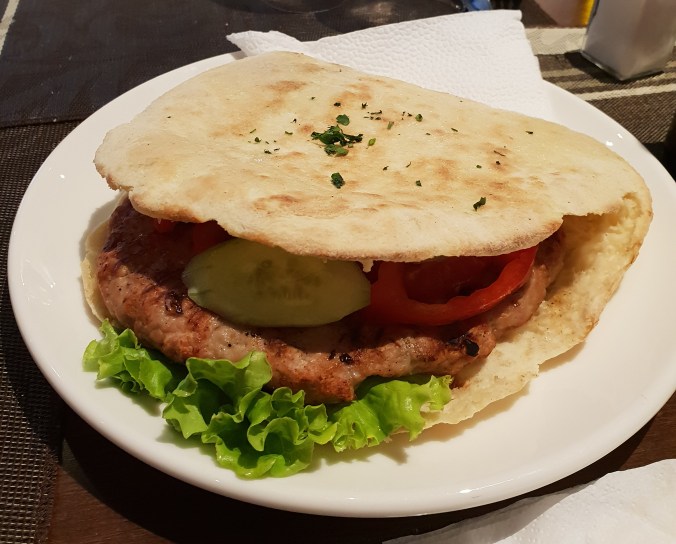
Kyufte in pita
Dessert and baked goods
Traditional breakfasts in Bulgaria often revolve around pastries, especially banitsa, which also functions as a popular takeaway snack. These are flaky filo pastry snacks filled with cheese and are very similar to those found across Greece and the Balkans such as spanakopita and burek / borek.
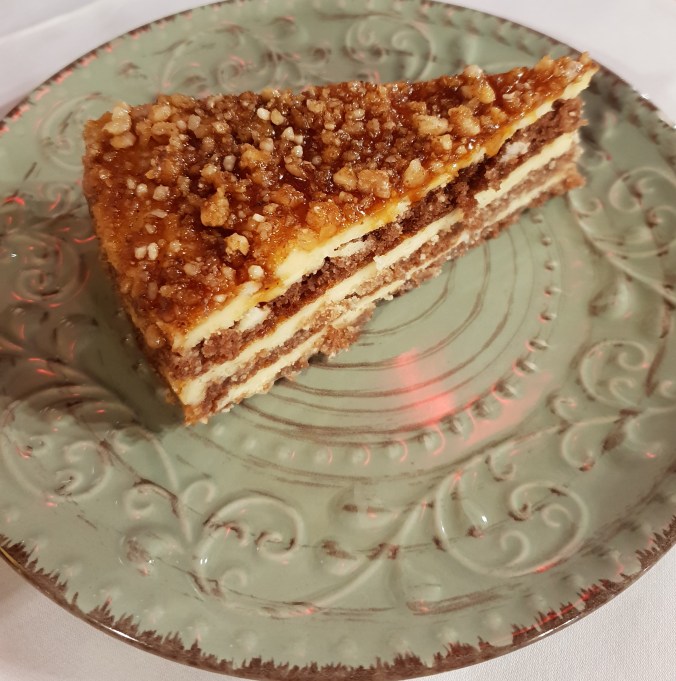
Walnut cake
Desserts on offer usually include various types of cakes, especially walnut based cakes, as well as pastry-based sweets such as baklava. Halva is also popular.
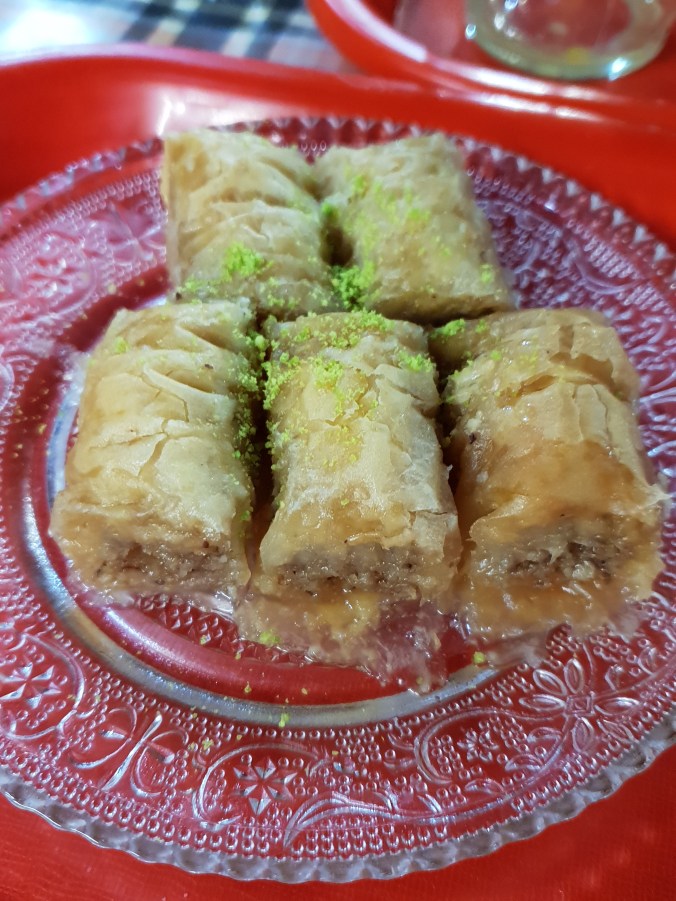
Baklava in Bulgaria
Drinks
Coffee is the most popular hot drink (there are crappy looking machines dotted randomly around most high streets), although various teas are also available, but typically fruit or herbal varieties. Getting decent black tea of any variety was basically impossible and in the end I went almost the whole week without any (torture). If you’re British and you can’t live without it then this is a country you need to take your own teabags to!
The national drink is rakia, a brandy like drinks made from various fruits including grapes, plums and apricots. Bulgaria also produces a lot of both white and red wine but those that I sampled weren’t especially palatable!
I did really enjoy the beers, which is always a key part of travelling for me. There are various big Bulgarian brands available, which are all decent. My favourite was Shumensko but you will also find Ariana, Kamenitsa and Zagorka. You’ll also find regional beers as you travel.


What time of year did you go to Bulgaria.? As I have looked at flying out there and the flight’s are well over what you stated.
That I know for sure as I have a home in Bulgaria and travel to and from twice a year.
LikeLike
I went in April. I’ve just looked on Google flights for a return flight in June from Stansted to Sofia and it’s £75 (without luggage). They seem to be around £125 from mid-July through to August, so they’re season dependent (as stated in the post)
LikeLike